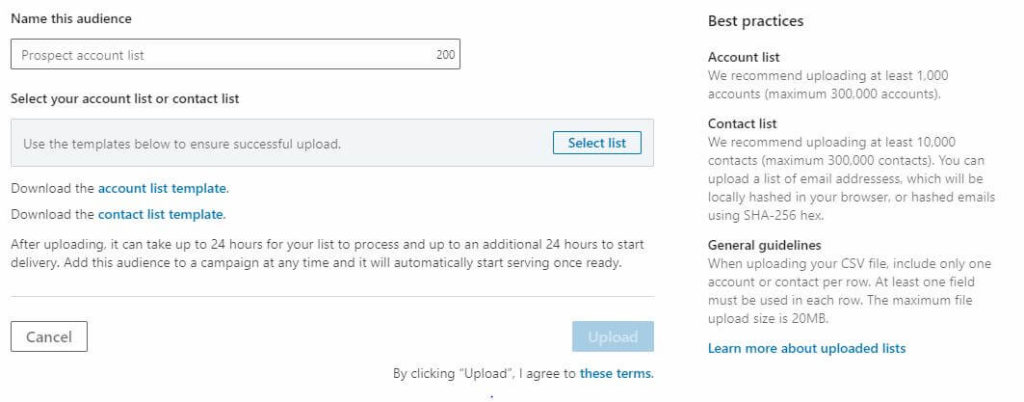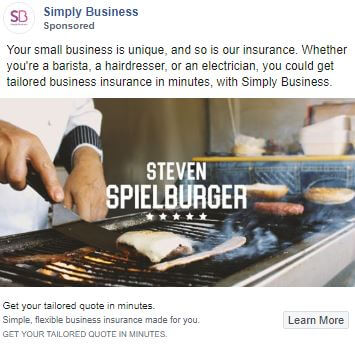Capitalizing on paid social in B2B industries
Driving business from paid social ads challenges B2B stakeholders. An outline of what works well in the B2B space and how to make it work for you.
Driving business from paid social ads challenges B2B stakeholders. An outline of what works well in the B2B space and how to make it work for you.
Paid advertising on social media channels always seems to be growing, it’s a huge buzzword at the minute and everybody wants it to work for their business.
In B2C you’ll find endless ecommerce businesses who essentially make a living through Facebook ads alone and this makes sense, social media is very much a consumer channel. But this doesn’t stop stakeholders in B2B companies pushing for paid social to drive a volume of leads and clients.
And this is where it gets challenging. As a B2B marketer, you are advertising in an unleveled playing field.
When you advertise on Google Ads you have user intent, you still have competition but you are all competing for the same thing, an engaged user.
When you advertise on Facebook however, you are targeting the same users as businesses in fashion, electronics, homeware – and there is no intent.
It, therefore, becomes incredibly important that you pinpoint the right audience and target them with engaging creatives. If you don’t you will just be wasting ad spend.
There is so much you can do with paid social ads, so I’ve outlined a few that I have seen work well in the B2B space.
There are so many audiences you can test across LinkedIn and Facebook, be that based on job titles, interests, company names – the list goes on. However, If you are new to paid social or just looking for a new way to generate leads, lookalike audiences are where I would start.
There are two ways to do this; – the first is to get a list of all the users who have enquired via your website, be that a form completion or a download – whatever you deem to be an inquiry.
The second, and better option, is to upload a list based on actual client data i.e. people who have paid for your service.
Creating these audiences is where AI and paid search go hand in hand. We are relying on the social platforms to analyze our data, our customer’s profiles, and behavior and then finding us users it deems to be similar.
The caveat, as with all AI like this, is that your lookalike is only ever going to be as good as the data you input, hence the platforms recommend you upload a significant enough amount of data.
The process of creating a lookalike audience is straightforward with both Facebook and LinkedIn.


The difference with Facebook is that it allows you to select the size of your lookalike audience based on a percentage scale which ranges from one to ten percent. One percent is essentially the audience that is most alike your customer data and ten percent is therefore much broader. You are able to create multiple audiences and tailor your bidding appropriately.
The audience is one thing, but you still need to couple this with appropriate creative and compelling messaging.
Coming back to one of my original points, standing out on paid social is difficult for all businesses, given the fact there is just so much interesting content at a user’s fingertips – their friend’s posts, brands they follow, pages they follow and ads to name a few. So it is important that your ads stand out.
Further still, your B2B ad needs to work a little harder to stand out. On LinkedIn you get a bit of good grace from users; people are in the professional mindset and engaging with business-related content. However, with Facebook, it needs to be interesting, engaging, and most importantly stand out.
The best example I have seen of a business doing this well is Simply Business, a UK based business insurance company, who has a whole campaign around businesses with interesting names.

The social creatives all play on celebrity names as business names, “Steven Spielburger”, “Leonardo DiCappuccino”, and other such ones.
The reason I say they are doing this well is I first saw this campaign when browsing Instagram stories on my personal account and it made me look into what else they were doing.
Their campaign is utilizing this same kind of creative across Facebook and Instagram with image ads, videos, and obviously stories.
Design something that stands out and grabs people’s attention as they scroll up and down a feed. Bold colors and clear messaging are key to this.
Keep them succinct and avoid using overtly corporate or stock footage. Appearing natural is what is likely to drive engagement.
Perfect for Facebook, focus on some kind of animation that relates to something people know, for instance, a gif of houses with “for sale” signs changing to “sold” might stick in the mind of realtors.
Use tools like the Facebook Ad Library and the Ads tab on a company LinkedIn page to review the creative they are using.
Without a doubt, tailoring your message to your audience is one of the most important aspects of advertising on social media.
If social platforms allow you to pinpoint your audience to something as specific as Marketing Directors in finance businesses with 11-50 staff on the East coast you need to ensure you make the best use of that and tailor your creative to it.
Over the last few months, I have tended to split all social campaigns out by sector so I can pinpoint target customers who are realtors, accountants, and attorneys to target them with copy and creative that highlights why my service is of value in their industry.
This is incredibly simple to do, and while it may be more time consuming to set-up, you will see much better CTRs and much better conversion rates when that traffic comes to your site – even more so if your landing pages can reflect the audience too.
This seems like a really basic and dull tip, but it works.
Whilst there is nothing particularly glamorous or exciting about a LinkedIn Text Ad they can be incredibly effective in generating leads.

There is no need for any complicated creative and therefore no need to go through the process of briefing into a designer and using their resource. You can get these set up in less than five minutes.
In setting up the ad you will also need to have created an audience; it makes sense that you craft your headline and description to reflect this audience. As I have said previously in this post, it is essential that your ad messaging is relevant to your audience, especially on social where there is so much content flying around.
Generally you will find that you get a high number of impressions and a very low CTR, however, with the LinkedIn audience targeting options, you know that this traffic will be highly relevant. In addition to this CPCs are often much cheaper on text ads when compared with other LinkedIn ad formats.
All in all, for very little effort you can set up campaigns which, in my experience, have tended to be fruitful in generating leads, and doing so at an effective cost-per-lead.
To summarise, there is so much that you can be doing with paid social in a B2B industry, but there are a few things that you definitely need to be considering:
And as with all things digital, the most important thing is to test and share. There are always new features on social advertising platforms and you never know what will work until you give it a go.